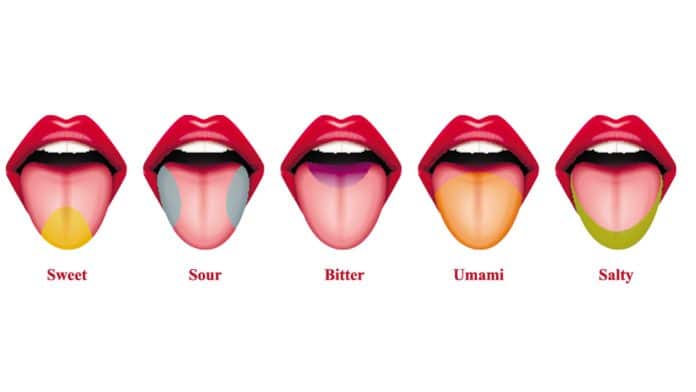We all love to eat because we find food tasty. This taste testing is done by our tongue, which has several taste receptors present on the taste buds. Any food or other substance that we put over our tongue reacts chemically with these receptors and produce a sensation of delicious or different other flavors. Scientifically proven, these receptors are stimulated in which five different types of flavors react and allow us to differentiate between sweet, sour, bitter, or salty and umami. These flavors are known as the five basic sensations sensed by our tongue. Well, it gives us a variety of choices and cravings for food through a combination of these basics tastes.
Sweet
This taste has a huge fan following and causes to increase the urge to eat more. It is detected by our tongue when we eat foods containing sugar and its derivatives. These compounds stimulate our sensory cells and produce a calming and pleasurable effect on the brain. Almost everyone is aware of this taste, and it is present in sugary foods and drinks.
Sour
This taste is detected by our tongue when we taste things that are acidic i.e., containing hydrogen ions that react with the taste buds and produce a tart sensation. Such as citrus fruits, vinegar or lemon juices
Salty
Food containing sodium chloride or table salt mainly contributes to salty taste. Our tongue can bear this saltish taste as an edible flavor until some limits only. When taken in large, the brain signals as bad and leads to nausea. Depending on these quantities, our tongue detects saltiness as both appetitive and aversive.
Bitter
The bitter taste is considered as unpleasant and prevents us from eating anything poisonous. This taste results due to 35 different proteins that react to the sensory cells and respond to these bitter substances. These are usually present in toxic herbs and plants or those that can not be taken as a whole.
Savory
Savory or the “umami” taste is appetitive, just like the sweet taste, it is somewhat like the taste of a meat broth or cheese. It is usually detected due to glutamic acid or aspartic acid. This taste is added to different foods as flavor enhancers. The word umami itself refers to deliciousness.
To those who think Hot and Spicy contributes to a taste should know that it is entirely wrong! Because, when we put a spice on our tongue, it produces heat that burns our tongue. This painful burning sensation is detected by our nerves responsible for touch and temperature; pass it to the brain, which response as a sudden urge to drink a lot of cold water and relief this burning sensation.
There is a myth that the tongue has a particular region for each taste. Wrong! Our tongues have taste buds all over, which are equally responsible for detecting every taste. There is no front region for a sweet or back part for bitter taste. Instead, the complete experience of any taste results when all the sensory cells are involved from the whole tongue.
The cells have different levels of sensitivity for these 5 basics taste which make us responsive to these taste.
These cells detect the taste based on the intensity of the stimulus i.e., the saltier the food, the stronger the stimulus.
There is a chance to create several flavors with these five basic tastes combining it with a sense of touch, varying temperature, and smell.
Until Next Time,
Team Doctor ASKY!





















